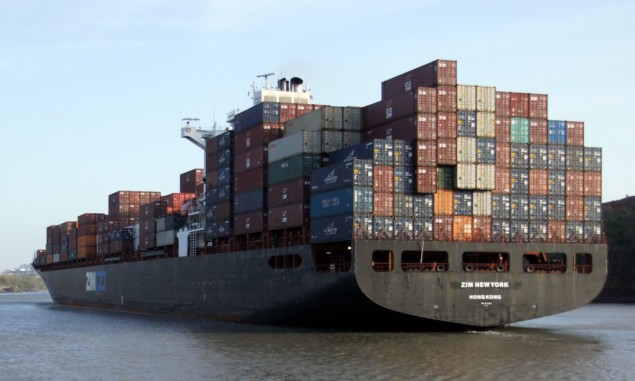
A full-scale prototype muon tomograph that can peer inside cargo containers has been created by researchers in Italy and the US. The team, led by Francesco Riggi at the University of Catania, combined layers of muon detectors with a specialized reconstruction algorithm to deliver high-resolution 3D images of a small lead block inside a large sensing area. The technology could make it far easier for cargo authorities to stop dangerous nuclear materials from being transported illegally.
Cargo containers are widely used to transport high volumes of goods and because of their robust steel construction and large size, small objects can easily be concealed inside them. As a result, there is a growing concern that containers could be used to transport illicit nuclear materials, including plutonium and uranium.
There is a need, therefore, for an efficient way of screening containers without disrupting global trade. Among the most promising emerging techniques for doing so is muon tomography, which uses the natural showers of muons created when high-energy cosmic rays collide with molecules in the upper atmosphere. When muons interact with a dense material such as uranium, they are scattered and absorbed in characteristic ways, depending on the atomic number of the material.
Egyptian pyramid
Muon showers strike all parts of the Earth and have been studied by physicists for nearly 90 years. As a result, scientists have a very good understanding of the energies, fluxes, and angular distributions of muons at moderate altitudes. By comparing these values before and after muons have passed through hidden volumes, researchers can determine both the compositions and positions of concealed materials. The technique is now being used in a growing number of research areas, and even led to the discovery of a large chamber inside an ancient Egyptian pyramid in 2017.
Muon tomography is particularly desirable because cosmic muons are uniformly available across the Earth’s surface. Furthermore, muons can penetrate far deeper into dense materials than conventional imaging methods, including X-rays. On the downside, however, because muons fluxes are relatively low, long scanning times are needed with current detector technologies.

Muons reveal hidden void in Egyptian pyramid
Now, Riggi and colleagues have combined several techniques previously developed to overcome the flux problem to create a full-scale muon tomograph. Their setup features multiple layers of scintillator-based muon detectors positioned above and below the sensing area. These detectors track changes in the paths of muons as they are scattered by dense materials. Then, an algorithm analyses the muon trajectories to estimate the point of closest approach between the muons and heavy atomic nuclei. From this information, the team can create high-resolution 3D images of dense materials inside the sensing area.
The technique enabled Riggi’s team to precisely determine the 3D position of a small lead block about 20 cm across within a sensing cross-sectional area of 18 m2 – which is large enough to accommodate a standard cargo container. The team says that their successful demonstration paves the way for devices that can efficiently detect concealed nuclear materials. With further improvements to reduce scanning times, the inspection devices may one day become an integral part of cargo-handling facilities worldwide.
The research is described in the European Physical Journal Plus.
